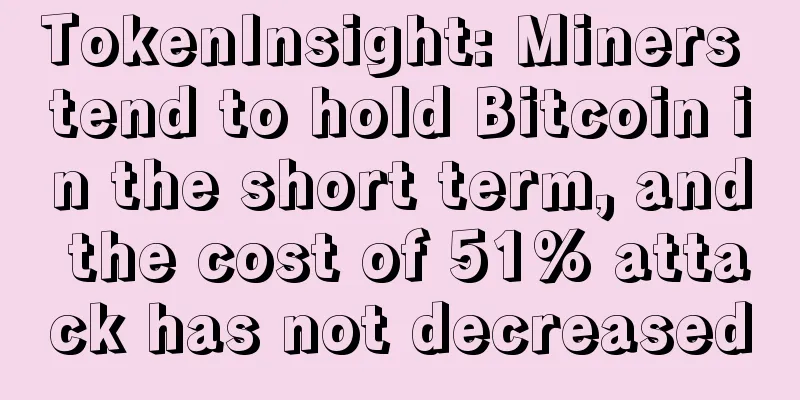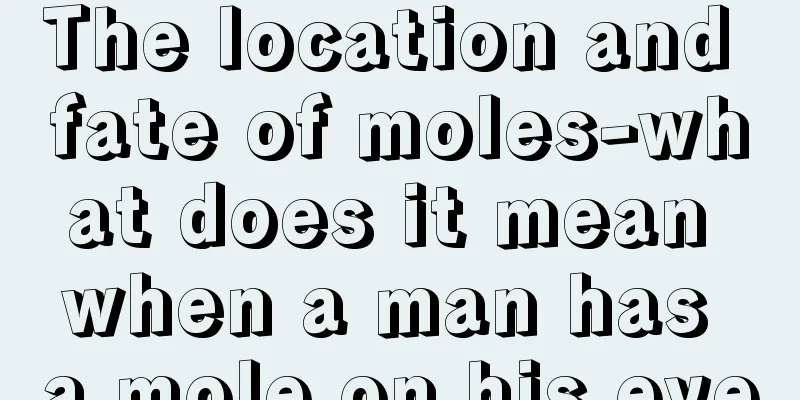TokenInsight: Miners tend to hold Bitcoin in the short term, and the cost of 51% attack has not decreased

|
Original title: "After the 312 crash, miners tend to continue holding Bitcoin" In mid-March 2020, due to the sharp decline in the Bitcoin market, some Bitcoin miners were forced to temporarily shut down their mining machines. The withdrawal of these mining machines from the market directly caused the computing power (hash rate) of the Bitcoin network to plummet from the historical high of 136EH/s to the recent low of 75.8EH/s. The market has rebounded recently, and the hash rate of the Bitcoin network has gradually stabilized at around 100EH/s. Compared with before the plunge, the mining difficulty of the entire Bitcoin network has dropped by about 16%, which is the second largest difficulty reduction in history, second only to the largest drop of 31.5% in December 2018. As the price of Bitcoin plummeted to historically rare levels, the average block time increased from about 10 minutes per block to 15 minutes per block before the Bitcoin network began adjusting its difficulty. Daily MRI shows miners prefer to hold Bitcoin in the short termMRI (Miner's Rolling Inventory) is a concept proposed by Charlie Morris on ByteTree in 2020. It is an indicator to measure the changes in the inventory level of Bitcoin held by miners, providing a valuable reference for miners to understand the market situation. MRI above 1 means that miners are selling more Bitcoin than they are mining, and their inventory is insufficient. On the contrary, MRI below 1 means that miners are hoarding Bitcoin. As shown in the figure below, before the Bitcoin market crash (March 11, 2020), the MRI indicator (>1) reflected that miners at the time were more inclined to sell their Bitcoin holdings. When Bitcoin fell to its lowest price and stabilized, the daily MRI dropped significantly and is currently basically below 1. This shows that after the Bitcoin crash, miners' views are completely different from before. Miners at this stage are more inclined to increase their Bitcoin inventory. At the time of writing this article, the value of the daily MRI indicator has returned to around 1. However, judging from the 1-week, 5-week and 12-week MRI indicators, the market is still bullish on Bitcoin in the long run, and miners will slowly resume their selling tendency before the Bitcoin crash. Fee Crossovers Indicate Growing Demand on the NetworkAlthough the recent market downturn has caused some miners to temporarily shut down their mines, resulting in a mining difficulty reduction of about 16% in the market. According to Charlie Morris's research on Fee Crossover published on the ByteTree website in 2020, when the 1-week moving average network transfer fee exceeds the 52-week relative fee, it can indicate a bull market, and vice versa. Currently, the moving average network transfer fee in the market in the past week is slowly climbing to near the 52-week moving average fee. This phenomenon reflects that the Bitcoin network activity is becoming more active and is a sign of positive market performance. SOPR shows that a large number of Bitcoin holders are currently selling at a lossThe SOPR ratio (Expenditure/Output Profit Ratio) developed by Renato Shirakashi is one of the useful indicators to measure people's emotions and behaviors. When SOPR>1, it means that the owner of Bitcoin makes a profit when trading; otherwise, it loses money. During the market downturn, the SOPR ratio dropped significantly to between 0.95-0.96, and when the market stabilized later, SOPR increased slightly. However, it will take some time for the SOPR ratio to truly return to the level of 1, and market participants are still waiting and hoping to sell their Bitcoin holdings after the market returns to the break-even point. 51% attack cost reduced? NO! Data source: Messari According to the latest data from Messari, the theoretical attack cost of the Bitcoin network has dropped significantly in the past 24 hours and is currently about $14 million. The reduction in the theoretical attack cost has caused some concerns in the market about the security of the Bitcoin network, but due to the following reasons, attackers cannot obtain enough computing power to complete the operation of attacking the network, so it is actually impossible for anyone to launch a 51% attack on the Bitcoin network.
From the above three points, it can be seen that no matter how much the mining difficulty is reduced, no matter how much the attack cost is reduced, the risk and operability of the Bitcoin network suffering a 51% attack are very low. |
<<: Latest development: FCoin has been criminally investigated in Hunan
>>: Miners sell Bitcoin inventory. What does the continuous rise of the MRI index indicate?
Recommend
Physiognomy tells you whether people with big nostrils have good personalities.
1. People with big nostrils are optimistic People...
What does the island pattern on the fate line mean?
Island pattern is a rare pattern and one of many ...
What are the facial features of people with bad intentions? Why do these people have bad hearts?
We can learn a lot from facial features, includin...
Where is the most amazing love mole on a woman's face?
Love is the most difficult thing to explain in th...
Mole position and wealth - Which moles on the face will affect wealth
Financial luck is something that each of us is co...
How to avoid unhappy marriage by looking at your face
How to avoid unhappy marriage by looking at your ...
Is it good to have a mole on the forehead? What does a mole on the forehead mean?
Many people don't like moles on their face, b...
How to read the meaning of marriage line in palmistry
The marriage line is also called the love line. A...
What does a chin tip that tilts upward indicate?
The chin can show whether you are blessed in life...
What kind of woman has a happy marriage?
A happy marriage is a woman’s lifelong pursuit, b...
Will a woman with a "川" pattern between her eyebrows be spoiled after marriage?
Some people say that marriage is a shackle. Women...
Australian regulator: Banks closing Bitcoin business bank accounts, no need for full investigation
As early as October last year, Australian banks s...
Palmistry teaches you how to tell love between men and women
Palmistry teaches you how to tell love between me...
Characteristics of extremely intelligent people: clear and intelligent eyes
Different faces give people different impressions...
Mole on the buttocks fate diagram
Mole on the buttocks fate diagram Moles on the bu...









